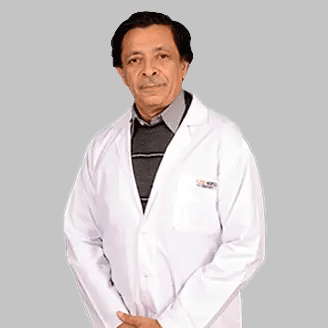-
Doctors
-
Specialities & Treatments
Centre of Excellence
Specialties
Treatments and Procedures
Hospitals & Directions HyderabadCARE Hospitals, Banjara Hills CARE Outpatient Centre, Banjara Hills CARE Hospitals, HITEC City CARE Hospitals, Nampally Gurunanak CARE Hospitals, Musheerabad CARE Hospitals Outpatient Centre, HITEC City CARE Hospitals, Malakpet
HyderabadCARE Hospitals, Banjara Hills CARE Outpatient Centre, Banjara Hills CARE Hospitals, HITEC City CARE Hospitals, Nampally Gurunanak CARE Hospitals, Musheerabad CARE Hospitals Outpatient Centre, HITEC City CARE Hospitals, Malakpet Raipur
Raipur
 Bhubaneswar
Bhubaneswar Visakhapatnam
Visakhapatnam
 Nagpur
Nagpur
 Indore
Indore
 Chh. Sambhajinagar
Chh. SambhajinagarClinics & Medical Centers
Book an AppointmentContact Us
Online Lab Reports
Book an Appointment
Consult Super-Specialist Doctors at CARE Hospitals

Tracheostomy
Tracheostomy
Tracheostomy Surgery in Hyderabad, India
Tracheostomy is the procedure where the surgeons make a hole through the front side of the neck and into the windpipe. A tube is placed in the hole which helps in breathing. This is a surgical procedure which provides the air passage and helps in breathing as the usual route of breathing may be blocked. For some people the tracheotomy is permanent. The reasons why tracheostomy is done include;
-
It becomes necessary to use the ventilator for a long period.
-
Medical conditions that block the airway because of the vocal cord paralysis or it could be because of throat cancer.
-
Neurological problems could make it difficult to cough and require the suction of the windpipe.
-
Injuries of the head or neck that disturbs breathing.
Risk factors of Tracheostomy
While it is generally safe, there are some complications that can arise. They are;
-
Bleeding
-
Damage to the trachea or thyroid gland in the neck.
-
Displacement of the tracheostomy tube.
-
Air can be trapped in the tissue under the skin of the neck.
-
Air gets built up between the chest wall and lungs which could cause pain and breathing problems.
Long-term complications are more likely the longer a tracheostomy is in place. These problems include:
-
There could be the possibility of infection in the trachea and lungs.
The doctor might ask you to avoid eating or drinking before the procedure and also to stop some medications.
The procedure of Tracheostomy
The procedure is usually performed with general anaesthesia where you will not be aware of any surgical procedure. There are mainly two- surgical tracheostomy and percutaneous tracheotomy.
Surgical tracheostomy is the procedure where the doctor will make a horizontal incision through the lower part of the skin in front of the neck. The surrounding muscles are pulled and a portion of the thyroid gland is cut.
Percutaneous tracheostomy is the procedure where the doctor makes an incision at the base in front of the neck, as part of tracheostomy treatment. There is a lens fed into the mouth to view the inside of the throat. In both procedures, the surgeon will insert the tracheostomy tube into the hole.
After the procedure
You will have to spend some days in the hospital to allow the body to heal. You will be instructed about the precautions to be followed. The tracheostomy tube is to be taken care of so the nurse will help and teach to take care of the tracheostomy tube.
Tracheostomy prevents speaking but the doctor or nurse will properly help you to communicate. When you eat or swallow it might be difficult. The nutrients will be given intravenously. The air that you breathe usually is very drier because it does not pass through the nose and throat.
Tracheostomy is performed at CARE Hospitals by expert surgeons. We have a dedicated and skilled staff who will help you before and after the procedure to make it easier for you. At CARE Hospitals, we also offer advanced technology, which makes your recovery journey easier, improving your quality of life.
Tonsillectomy
This is a surgical procedure for the removal of the tonsils. This is also performed to overcome sleep disorders and aid breathing problems. Recovery time is usually 10 days to two weeks.
Who needs Tonsillectomy?
This surgery becomes a necessity if you have;
-
severe tonsillitis.
-
complicated tonsils.
-
bleeding in the tonsils.
Procedure
Since the procedure is carried out by giving general anaesthesia you will not be awake or experience any kind of pain. The doctor will cut the tonsils and remove the tissues and stop the bleeding. Some issues might arise after the procedure in rare cases. They are;
-
Pain in the throat for one or two weeks.
-
There could be some pain in the ears, neck and jaw.
-
You can experience nausea or vomiting.
-
Disturbed sleep.
-
Bad breath for a few weeks.
Adenoidectomy
This is a common surgery that helps in the removal of adenoids. These are the glands that are at the roof of the mouth.
Why is it essential to remove Adenoids?
When you have throat infections very frequently which causes the adenoids to enlarge. When the adenoids enlarge then they create disturbance in breathing and also block the path from the middle ear to the back of the nose. The enlarged adenoids cause the clogging of the eustachian tubes and can affect children’s hearing and respiratory health.
The symptoms of the enlarged Adenoids
-
frequent ear infections.
-
sore throat.
-
difficulty while swallowing.
-
breathing through the nose will be difficult.
Frequent ear infections because of the enlarged adenoids can give rise to serious problems which might cause hearing loss that leads to speech problems. Hence, immediate medical intervention is necessary.
Procedure of Adenoidectomy
The procedure is performed by giving general anaesthesia where you will be in deep sleep during the procedure. The adenoids are usually removed through the mouth. The small instrument is inserted and the adenoids are removed. The removal is done by a small incision.
The area is packed so that the bleeding can be controlled. You will be sent home the same day. Medications will be prescribed by the doctor to relieve the pain. You will recover completely in one or two weeks.
After the procedure
You will be with a sore throat for two to three weeks which is normal. During the recovery, it is essential to intake lots of fluids mainly to avoid dehydration. You must also avoid any spicy or crunchy foods for a few days.
What are the advantages of a tracheostomy?
A tracheostomy presents significant advantages when compared to tracheal intubation, which involves inserting a tube down the throat and into the windpipe. These benefits encompass:
- Enhanced comfort.
- Decreased reliance on sedation.
- Simplified weaning off mechanical ventilation.
- Quicker rehabilitation.
- Improved nutritional support.
- Earlier initiation of communication.
What are the risks or complications of tracheostomy?
Similar to any surgical procedure, there are potential risks associated with a tracheostomy. These risks encompass:
- Bleeding.
- Infection.
- Harm to the esophagus.
- Damage to the trachea (windpipe).
- Tracheo-esophageal fistula (an abnormal connection between the trachea and esophagus).
- Injury to the recurrent laryngeal nerve (the nerve controlling vocal cord movement).
- Blockage of the tracheostomy due to mucus or blood clots.
- Accumulation of trapped air in the lungs, chest, or around the tracheostomy site.
Adhering to proper tracheostomy tube hygiene and following recommended guidelines can minimize the risk of encountering these complications.
Our Doctors
-

Dr. Shailendra Ohri
MBBS, MS (ENT)
ENT
View More -

Dr. Rishi Ajay Khanna
MBBS, MS (ENT Head & Neck Surgery)
ENT
View More -

Dr. Manish Porwal
MBBS, MS, MCH
Cardiac Surgery
View More -

Dr. A. V. Venugopal
MBBS, MD, DM (Nephrology)
Nephrology, Renal Transplant
View More -

Dr. Abhishek Malviya
MBBS, DLO, DNB
ENT
View More -

Dr. Ajay Parashar
MS, MCh (Urology)
Renal Transplant, Urology
View More -

Dr. Ajit Kumar Shadani
MBBS, MD (General Medicine)
General Medicine/Internal Medicine
View More -

Dr. Ashok Panda
MBBS, MD (Medicine), DM (Nephrology)
Nephrology, Renal Transplant
View More -

Dr. Bibekananda Panda
MBBS, MD, DNB (Nephrology)
Nephrology, Renal Transplant
View More -

Dr. Chaitanya Pentapati
MBBS, MS (OTO, RHINO - LARYNGOLOGY)
ENT
View More -

Dr. Debabrata Panigrahi
MBBS, MS (E.N.T)
ENT
View More -

Dr. G Rama Subramanyam
MBBS, MS, MCh (Cardiothoracic Surgery)
Cardiac Surgery
View More -

Dr. G. Usha Rani
MS, MCh
Cardiac Surgery
View More -

Dr. Hakeem
MBBS, DLO
ENT
View More -

Dr. J.AL. Ranganath
MBBS, MD, DM (Nephrology)
Nephrology, Renal Transplant
View More -

Dr. Jyoti Mohan Tosh
MBBS, MS (General Surgery), Mch (Urology)
Renal Transplant, Urology
View More -

Dr. M Sanjeeva Rao
MBBS, MS, MCh (AIIMS)
Cardiac Surgery
View More -

Dr. M. A. Amjad Khan
MBBS, MS (ENT, Head & Neck Surgeon)
ENT
View More -

Dr. MD Kareemullah Khan
MBBS, MS (ENT), MRCS (England)
ENT
View More -

Dr. N Vishnu Swaroop Reddy
MBBS, MS ( E.N.T.), FRCS (Edinburgh), FRCS (Ireland), DLORCS (England)
ENT
View More -

Dr. P Vamsi Krishna
MBBS, MS, MCh
Renal Transplant, Urology
View More -

Dr. Pradip Saruk
MBBS, MD, DM Nephrology
Nephrology, Renal Transplant
View More -

Dr. Prateek Raj Betham
MBBS, MS (ENT), FHNSO
ENT
View More -

Dr. Prawash Chaudhary
MBBS, MD (Medicine), DNB (Nephrology)
Nephrology, Renal Transplant
View More -

Dr. Ram Sunder Sagar
MBBS, DLO
ENT
View More -

Dr. Ramesh Rohiwal
MBBS, MS (ENT), PGDHHCM
ENT
View More -

Dr. Ramiz Panjwani
MBBS, MD, DM
Nephrology, Renal Transplant
View More -

Dr. Ranbeer Singh
MBBS, DLO (DNB)
ENT
View More -

Dr. Ratan Jha
MBBS, DM, DNB, MD, DTCD (Gold Medallist), FISN
Nephrology, Renal Transplant
View More -

Dr. Sanjeev Anant Kale
MBBS, MD, DM, DNB, SGPGIMS
Nephrology, Renal Transplant
View More -

Dr. Shruthi Reddy
MBBS, DNB (ENT)
ENT
View More -

Dr. Sucharita Chakraborty
MBBS, MD (General Medicine), DM (Nephrology)
Nephrology, Renal Transplant
View More -

Dr. Sumanta Kumar Mishra
MBBS, M.S (General Surgery), M.CH (Urology, CMC, Vellore), DNB (Genito-Urinary Surgery)
Renal Transplant, Urology
View More -

Dr. Surbhi Chopra
MBBS, MS
ENT
View More -

Dr. Vikrant Vaze
MD - Physician, DNB - ENT
ENT
View More
Frequently Asked Questions
Still Have a Question?

